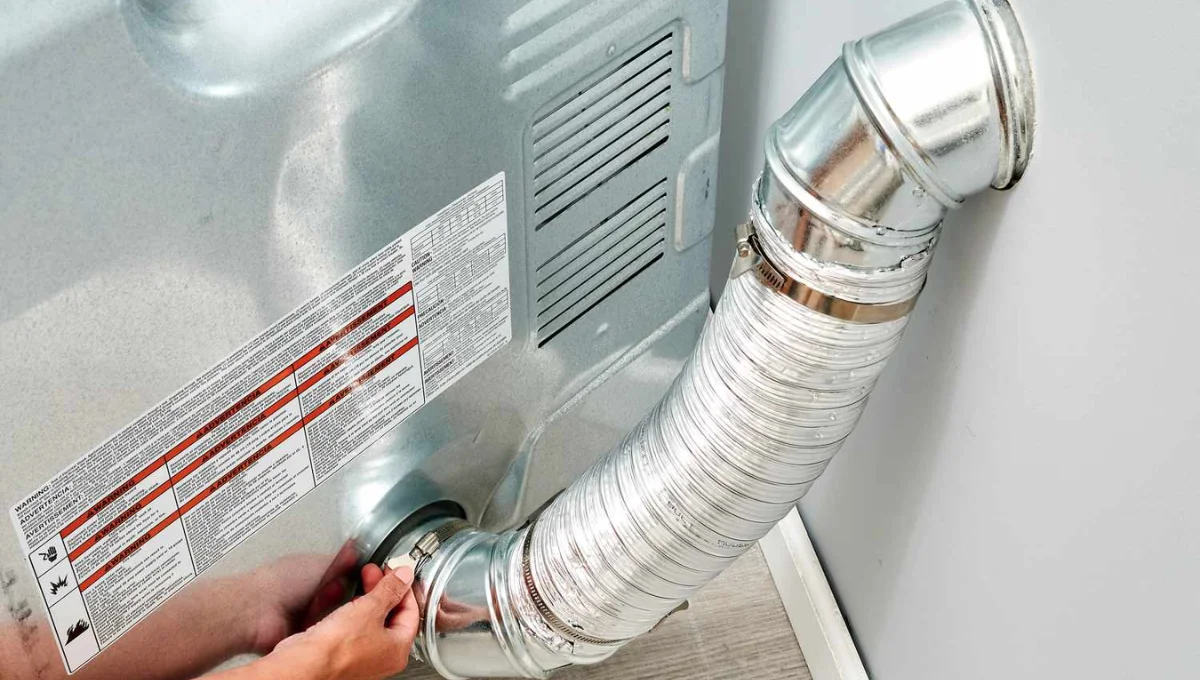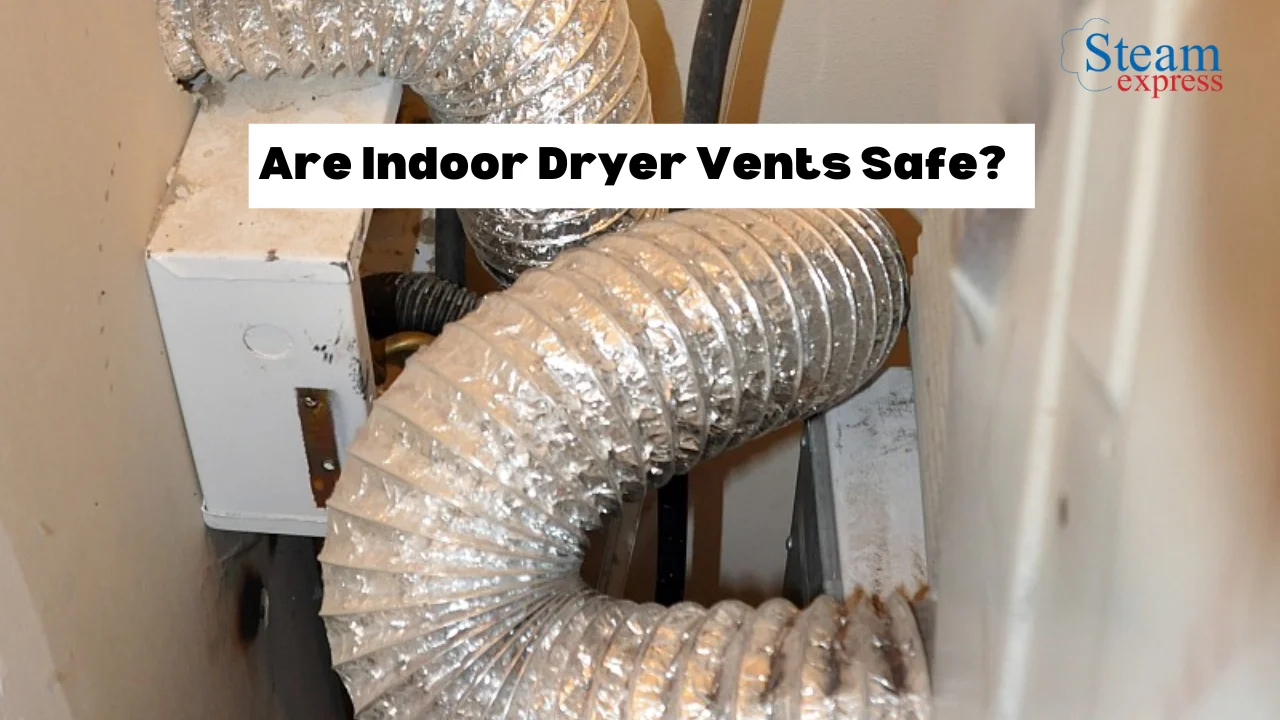Imagine this: you just finished washing your clothes, and now you’re in your comfy laundry room. Ever wondered if that indoor dryer vent you’re using is safe for your home? Well, it’s not a simple “yes” or “no.” Here’s the brief to this crucial question, “Are indoor dryer vents safe?”
Indoor dryer vents can be safe if used and maintained properly, but there are potential risks, such as lint buildup, fire hazards, and issues with indoor air quality. Regular cleaning, proper ventilation, and adherence to safety guidelines are crucial for minimizing these risks.
In this blog, we’ll uncover the secrets of indoor dryer vents and give you a clear answer. Don’t worry; we’ll also talk about the good and not-so-good parts so you can decide what’s right for your laundry routine.
Understanding Indoor Dryer Vents
An indoor dryer vent is like a path for the warm, damp air and lint that comes from your dryer. Instead of going outside, it goes into a room in your house. People use indoor dryer vents in places where setting up an outdoor vent is tricky, like apartments or condos.
So, how do indoor dryer vents work? They usually use pipes and filters to catch the lint and prevent it from piling up in the vent system. After that, the warm, damp air from the dryer goes into a room in your home, such as the laundry room, basement, or garage.
Are Indoor Dryer Vents Safe?
So, are indoor dryer vents a good idea? Well, using them can be okay, but it’s not a guarantee. It depends on how you use and take care of them. If possible, it’s better to have an outdoor dryer vent. But if you have to use an indoor one, follow the safety tips mentioned below to lower the risks.
To keep things safe, clean them regularly, make sure the air in your home stays clean, and pay attention to moisture. If you don’t handle them right, they might cause issues like too much moisture or even start a fire.
Now, let’s talk about the indoor dryer vent’s pros and cons related facts.
Pros of Indoor Dryer Vent
Understanding why indoor dryer vents can be good is important when deciding if they’re right for you.

No Need for Outdoor Access
If it’s hard to reach the outside from where you do your laundry, using an indoor vent is helpful. This is useful in places like apartments, basements, or homes where the usual outside vent isn’t an option.
Energy Efficiency
Indoor vents can keep your home warm during cold times, saving on heating costs. But be cautious because it might make your home too warm in the summer.
No Outdoor Lint Buildup
With an indoor vent, you don’t need to worry about lint piling up outside or blocking the ducts.
Cost Savings
Indoor dryer vents can save you money because you don’t need the usual outdoor ductwork, making installation more affordable.
Less Risk of Problems
They’re less likely to have issues like clogs and are generally safer when it comes to the risk of fires caused by lint buildup.
Convenience
You don’t have to go outside in bad weather to use your dryer since it’s indoors.
Cleaner Air
Using indoor vents can make the air inside your home cleaner because the hot air and lint stay inside, which is especially helpful for people with allergies or asthma.
Efficiency
Indoor dryer vents can make drying your clothes faster and quieter, and they look neater because they’re hidden inside your home.
Visit our insightful blog if you’re wondering how to hide a dryer vent hose.
Cons of Indoor Dryer Vent
Understanding the problems with indoor dryer vents is crucial to deciding if they’re the right choice for your home.
Lint Build-up
Indoor dryer vents collect a lot of lint. If this lint blocks the airflow, it can make the dryer very hot and pose a fire risk. To avoid this, make sure to clean the dryer exhaust regularly.
Clogging Issues
Some indoor dryer vents are more likely to get blocked than others due to their design. It’s wise to choose one that’s less likely to have this problem.
Moisture Trouble
In houses without good ventilation, the warm air from the dryer can make the air too humid. Excess humidity can lead to mold and mildew growth. To prevent this, set up a good ventilation system and use exhaust fans when running your dryer.
Indoor Air Quality
Releasing hot dryer air inside can make your home more humid and affect the air you breathe. It can also bring in lint and dust particles, making your air less clean.
Fire Hazard
Dryers produce a lot of heat, and when you vent that heat inside, there’s a slightly higher fire risk. Lint buildup in your dryer or vent hose can be dangerous, so regular cleaning is a must.
Carbon Monoxide Danger
Venting a gas dryer indoors poses a risk of carbon monoxide poisoning. Carbon monoxide is a gas you can’t see or smell, but breathing it in can be very harmful and even deadly.
Potential Legal Issues
So, are indoor dryer vents legal? Some places or building codes may not allow indoor dryer vents due to safety concerns, so check your local rules.
Visit our informative blog to learn what happens if you can’t vent your dryer outside.
Indoor Dryer Vents Safety Tips
If you use an indoor dryer vent, make sure to follow the below safety tips:
- Use an indoor dryer vent only if you have an electric dryer, not a gas one.
- Have a professional clean your dryer vent system at least once a year.
- Check your dryer vent system regularly for damage or too much lint.
- Clean the lint trap every time you use the dryer.
- If you’re using an indoor dryer vent, make sure the room has good ventilation.
Additional Tips:
- If you’re using an indoor dryer vent, consider using a clothesline or going to a laundromat to dry some of your laundry, especially if someone in your family has allergies or asthma.
- Use your dryer on less humid days to reduce moisture in your home.
- Think about using a dehumidifier in the room where your dryer is located.
- Be aware of signs of carbon monoxide poisoning, like a headache, feeling dizzy, nausea, or throwing up. If you have these symptoms, leave your home right away and call 911.
Contact a Pro
Lots of homes and laundromats use indoor dryer vents, so it’s important to be careful and think about both the good and not-so-good things. The main reason for accidents and issues with indoor dryer vents is when they aren’t installed properly. If experts set it up the right way and you make sure to do regular maintenance, your indoor dryer vent is probably going to be safe. This helps stop many possible accidents linked to dryer vents.
For excellent dryer vent cleaning in Houston, TX, trust Steam Express. Our licensed and insured technicians use an eco-friendly process approved by GMP and FDA to make your dryer safer and more effective. We vacuum and remove lint and debris from the dryer vents and ductwork. If we still feel air blockage, we keep going until the vent is completely clear.
Don’t wait too long – our preventive maintenance helps your dryer work faster and lowers the risk of fires. Call now for a free estimate and enjoy a special discount!
Wrapping Up
To wrap it up, we’ve talked about the crucial issue — “Are Indoor Dryer Vents Safe?” They have some good sides, especially if you can’t use an outdoor one. However, they can also be a bit risky, bringing issues like too much moisture, problems with air quality, and a higher chance of fires. To stay safe, make sure to set them up correctly, clean them regularly, and follow the rules in your area.
FAQs
What’s the difference between outdoor vs. indoor dryer vents?
Outdoor dryer vents release hot, damp air outside, while indoor vents send it into your home.
What are the dangers of venting dryers indoors?
Venting dryers indoors can make the air too humid and increase fire risks from lint buildup, affecting air quality and safety.
How does an indoor dryer vent with no humidity work?
An indoor dryer vent without humidity works by using special tubes and filters. It catches lint and releases warm, dry air in your home without making it too wet.


